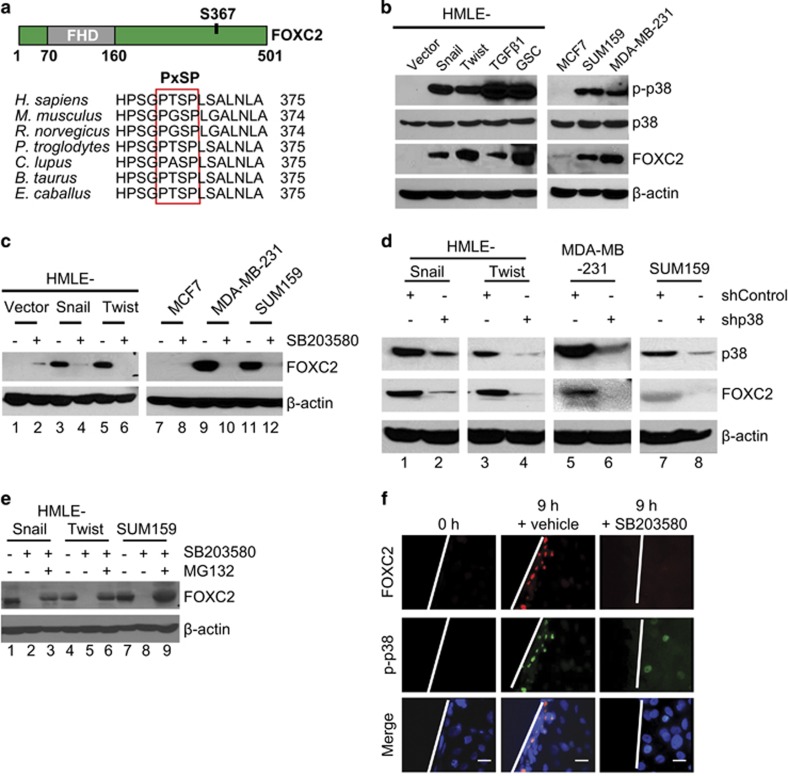Figure 1.
FOXC2 expression correlates with p38 activation in cells with mesenchymal and stem cell properties. (a) Alignment of FOXC2 amino acid sequences from multiple species shows high evolutionary sequence conservation at S367, the putative phosphorylation site for p38. (b) Cell lysates from the indicated cells were analyzed by immunoblotting for p-p38, p38 and FOXC2. β-Actin was used as a loading control. (c) The indicated cells were treated with vehicle or SB203580 for 24 h. Cell lysates were analyzed by immunoblotting for FOXC2. β-Actin was used as a loading control. (d) The indicated cells were transduced with p38 shRNA (shp38) or control shRNA (shControl). Cell lysates were analyzed by immunoblotting for p38 and FOXC2. β-Actin was used as a loading control. (e) Pretreatment of the indicated cells with 10 μM MG132 prevents the proteolytic degradation of FOXC2 following SB203580 treatment, as determined by immunoblotting. β-Actin was used as a loading control. (f) For the scratch/wound-healing assay, a confluent monolayer culture of epithelial HMLE cells was scratched with a sterile pipette tip. HMLE cells were treated with vehicle or SB203580 and fixed immediately following scratch induction (0 h) or 9 h post wound induction, followed by immunostaining for FOXC2 (red) and p-p38 (green). Nuclei were counterstained with 4,6-diamidino-2-phenylindole (DAPI; blue). Scale bar, 20 μm.

